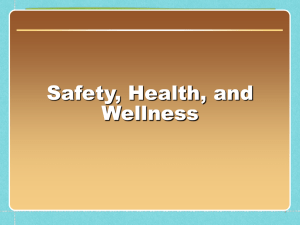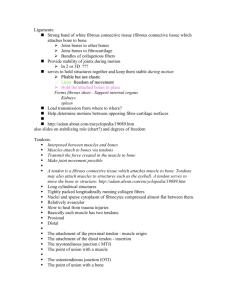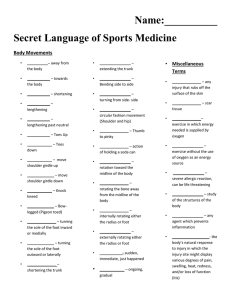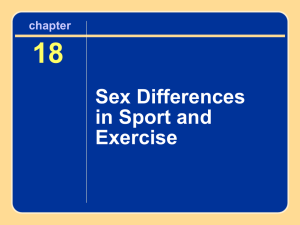Fitness Vocabulary #1 1. Ligament: a fibrous connective tissue
advertisement
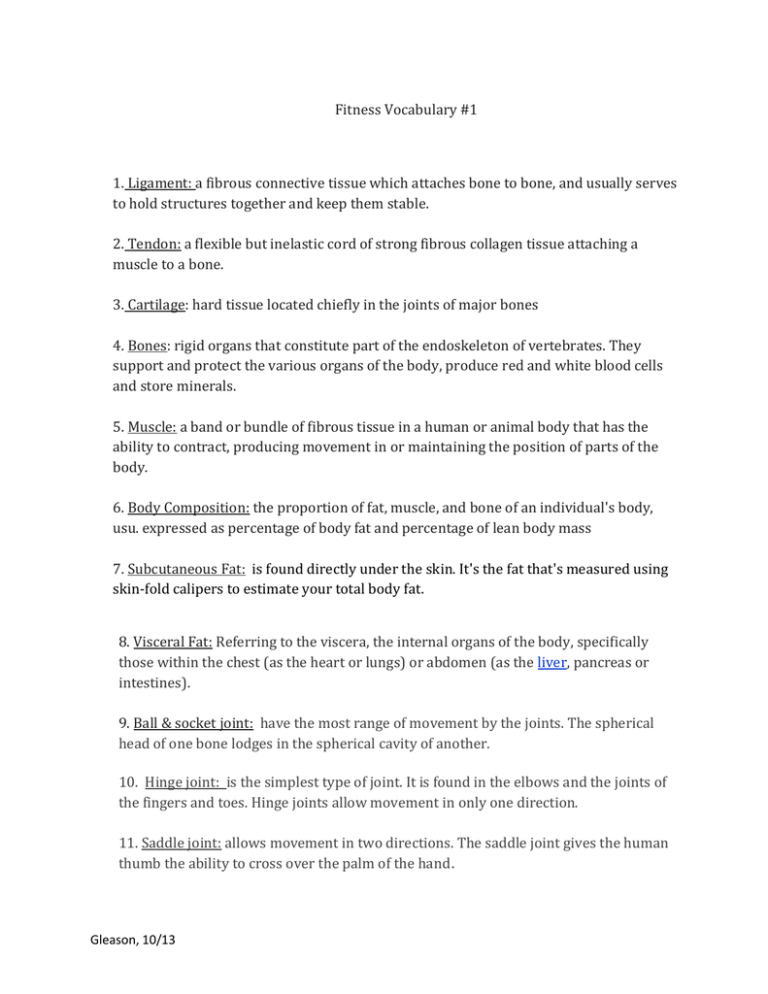
Fitness Vocabulary #1 1. Ligament: a fibrous connective tissue which attaches bone to bone, and usually serves to hold structures together and keep them stable. 2. Tendon: a flexible but inelastic cord of strong fibrous collagen tissue attaching a muscle to a bone. 3. Cartilage: hard tissue located chiefly in the joints of major bones 4. Bones: rigid organs that constitute part of the endoskeleton of vertebrates. They support and protect the various organs of the body, produce red and white blood cells and store minerals. 5. Muscle: a band or bundle of fibrous tissue in a human or animal body that has the ability to contract, producing movement in or maintaining the position of parts of the body. 6. Body Composition: the proportion of fat, muscle, and bone of an individual's body, usu. expressed as percentage of body fat and percentage of lean body mass 7. Subcutaneous Fat: is found directly under the skin. It's the fat that's measured using skin-fold calipers to estimate your total body fat. 8. Visceral Fat: Referring to the viscera, the internal organs of the body, specifically those within the chest (as the heart or lungs) or abdomen (as the liver, pancreas or intestines). 9. Ball & socket joint: have the most range of movement by the joints. The spherical head of one bone lodges in the spherical cavity of another. 10. Hinge joint: is the simplest type of joint. It is found in the elbows and the joints of the fingers and toes. Hinge joints allow movement in only one direction. 11. Saddle joint: allows movement in two directions. The saddle joint gives the human thumb the ability to cross over the palm of the hand. Gleason, 10/13 12. Gliding joint: permits a wide range of mostly sideways movements - as well as movements in one direction-a pivot joint near the top of the spine allows the head to swivel and bend. 13. Sprain: A sprain is an injury to the ligaments around a joint. 14. Strain: an injury to a muscle or tendon in which the muscle fibers tear as a result of overstretching. 15. Dislocation: occurs when there is an abnormal separation in the joint, where two or more bones meet. Gleason, 10/13
